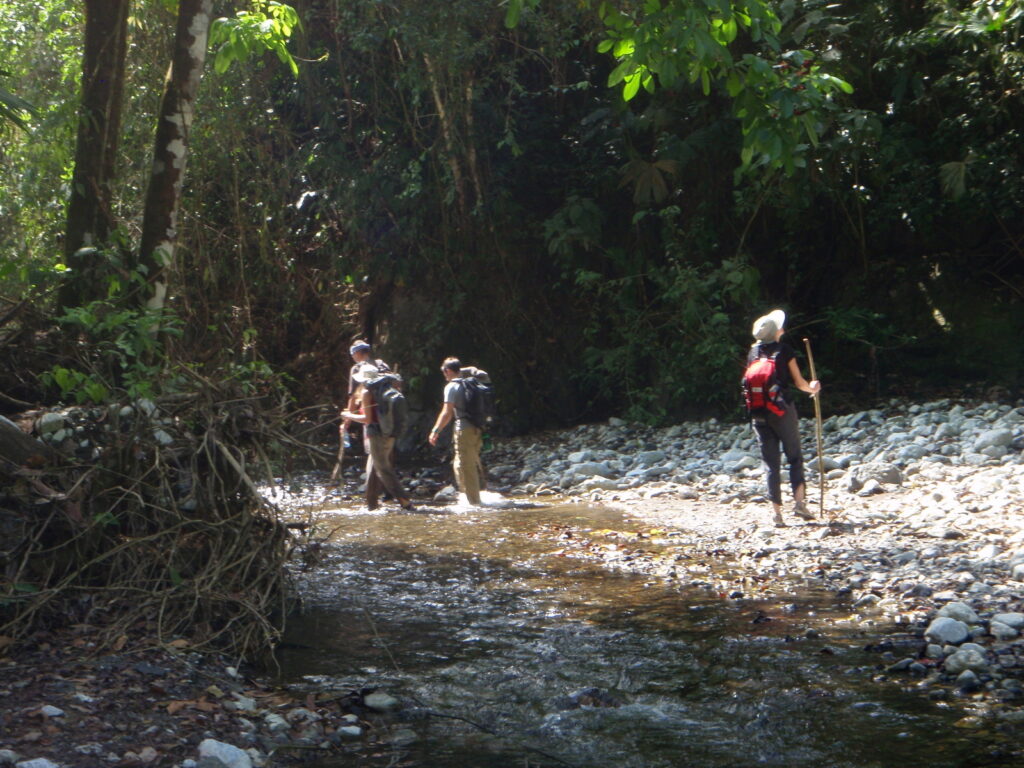Exploring Corcovado National Park: Costa Rica’s Most Diverse Wildlife Sanctuary
Situated on the remote Pacific coast of Costa Rica, Corcovado National Park is a vast wildlife sanctuary and the largest protected area in the country. Home to an incredibly diverse range of species, Corcovado boasts an unspoiled landscape of virgin rainforest, lagoons, beaches, and grasslands. For nature lovers, Corcovado National Park is one of the most rewarding destinations in Central America.
Exploring the Park: A Guide to Corcovado National Park
Corcovado National Park covers an area of over 42,000 hectares and is the most biologically diverse place on Earth. The park is home to thousands of species, including some of the most endangered creatures on the planet. Here, jaguars, tapirs, anteaters, deer, sloths, monkeys, rare birds, and hundreds of other species live in harmony.
The Park is divided into three distinct sections: the coastal plain, the mountains, and the rainforest. Each area has its own unique flora and fauna, and offers a different experience for visitors.
The Coastal Plain:
The coastal plain is home to some of the most stunning beaches in Costa Rica. Here, visitors can explore the untouched sand and surf along the Pacific coast. This area is also home to a variety of wildlife, including crocodiles, sea turtles, and iguanas.
The Mountains:
The mountains are the most isolated part of Corcovado National Park. Here, visitors can explore the lush, tropical rainforest and experience the beauty of the region’s diverse flora and fauna. The mountains are home to howler monkeys, toucans, and a range of other species.
The Rainforest:
The rainforest is the heart of the park and is home to some of the most spectacular wildlife in Costa Rica. Here, visitors can explore the lush vegetation and observe a range of rare species, including jaguars, tapirs, sloths, and a variety of birds and reptiles.
Things to Do in Corcovado National Park
There are a range of activities available for visitors to Corcovado National Park, including hiking, birdwatching, wildlife observation, and kayaking.
Hiking:
The park offers some of the best hiking in Costa Rica. Several trails run through the park, ranging from easy to difficult. Visitors can explore the rainforest, the mountains, and the beaches, and experience the unique wildlife of Corcovado.
Birdwatching:
Corcovado National Park is home to over 370 species of birds, making it one of the best places for birdwatching in Costa Rica. Visitors can observe a range of rare species, including the rare yellow-billed cotinga, the rufous-winged wood rail, and the gray-headed chachalaca.
Wildlife Observation:
The park is home to a variety of wildlife, including jaguars, tapirs, anteaters, deer, and sloths. Visitors can observe these animals in their natural habitat, as well as a range of other species.
Kayaking:
Kayaking is a popular activity in Corcovado National Park. Visitors can explore the park’s lagoons and rivers, and observe a range of wildlife from the water.
When to Visit Corcovado National Park
The best time to visit Corcovado National Park is from December to April, when the weather is dry and the trails are more accessible. During this period, you’ll have a higher chance of spotting wildlife, and the conditions for hiking and other activities are optimal.
However, it’s important to note that Corcovado National Park is open year-round, and each season offers a unique experience. The rainy season, from May to November, brings lush greenery, fewer crowds, and an opportunity to witness the park’s vibrant flora. However, trails can be muddy and some areas may be more challenging to access.
It’s advisable to check weather conditions and trail availability before planning your visit. Additionally, hiring a local guide is recommended to enhance your experience and ensure safety in the park.
How to Get to Corcovado National Park
Corcovado National Park is located on the Osa Peninsula in southwestern Costa Rica. Access to the park is primarily by boat or on foot. Here are the main entry points:
- Drake Bay: Accessible by boat or small plane, Drake Bay is a common entry point to the park. Boats can take you to the San Pedrillo or Sirena ranger stations.
- Puerto Jimenez: This town provides access to the eastern side of the park. You can reach the park via boat or by driving to Carate and hiking into the park.
- Carate: Situated near the southern entrance of the park, Carate is the starting point for the La Leona Ranger Station trail. You can reach Carate by bus, taxi, or car.
Accommodations at Corcovado National Park
Accommodations near Corcovado National Park include lodges, eco-friendly resorts, and budget-friendly options. Staying in or near the park allows you to fully immerse yourself in its natural beauty and wildlife. Many accommodations offer guided tours and can assist with park permits.
It’s advisable to book accommodations in advance, especially during the high season, to secure your preferred lodging and ensure a seamless experience.
Conclusion
Corcovado National Park is a true gem for nature enthusiasts, offering an unparalleled opportunity to explore one of the most biodiverse places on Earth. From pristine beaches to dense rainforests, the park’s diverse ecosystems provide a habitat for an incredible array of wildlife.
Whether you’re an avid hiker, birdwatcher, or wildlife observer, Corcovado National Park has something to offer. The chance to witness jaguars, tapirs, and an abundance of bird species in their natural habitat makes this park a must-visit destination for those seeking an authentic and immersive experience in Costa Rica’s wilderness.

